Ranking Psychology: The Best Way to Brag
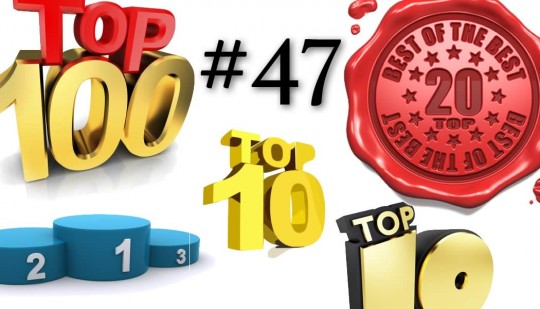 Say you’ve got good news – your Chardonnay was named the ninth best in a listing of hundreds. Or, you just got ranked #17 on a list of 50 influential bloggers. Being number one would have been best, but at least now you have a desirable ranking to promote.
Say you’ve got good news – your Chardonnay was named the ninth best in a listing of hundreds. Or, you just got ranked #17 on a list of 50 influential bloggers. Being number one would have been best, but at least now you have a desirable ranking to promote.
But, if you aren’t #1, what’s the best way to promote your rank? Should you say you are #9? Or claim to be in the Top 9? Or the Top 10? How about, “One of the best?”
A new paper in the Journal of Marketing Research, Is Top 10 Better Than Top 9? The Role of Expectations in Consumer Response to Imprecise Rank Claims, examines this exact issue, and some of the results may surprise you.
Why “Comfort Tiers” Matter
A key concept that runs through the experiments is the existence of “comfort tiers” for rankings. A comfort tier is a grouping that is familiar and expected, like “Top 10” or “Top 50.” “Top 47” or even “Top 9” would be unexpected and would not qualify as comfort tiers.
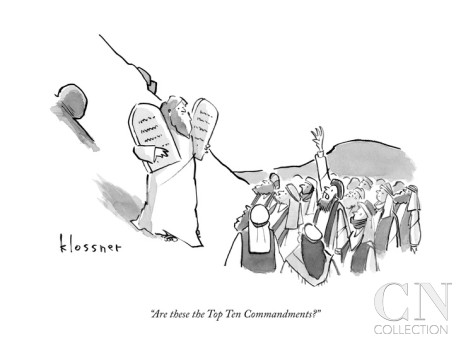
The existence of these comfort tiers is likely due to frequent usage of specific numbers. Top lists ending in “0” and “5” are most common, as I described in my earlier article, Power of Ten: The Weird Psychology of Rankings:
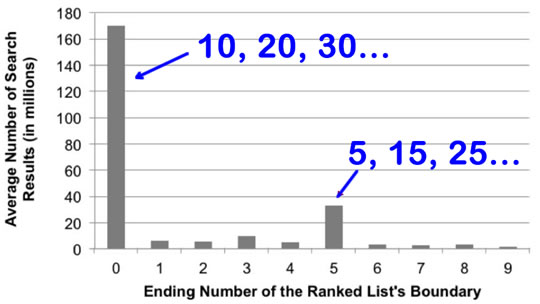
The researchers used a variety of ways to find how different ranking language affected how the subjects perceived a brand. For example, some saw this ad with a “Top 92” while others saw “Top 100.”
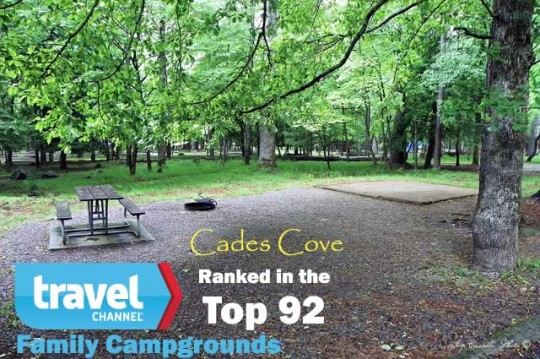
In another test, business school ads with different ranking text were compared.
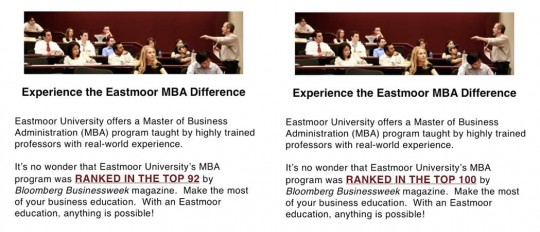
The figure below shows the effect of including ranking information in various ways:
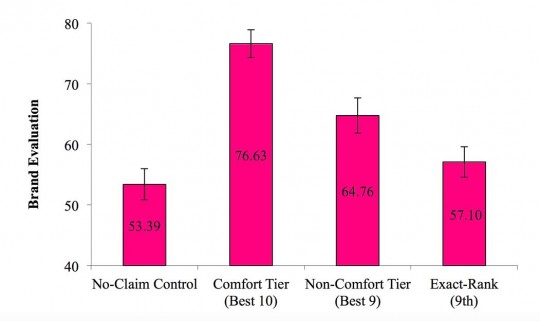
(Higher “brand evaluation” is better.)
Let’s look at some of the individual possibilities for displaying a ranking…
If you’ve got it, flaunt it
One clear finding from several of the experiments is that showing a desirable ranking in any way outperformed the “no information” condition.
So, if your product or brand has received a favorable ranking, it will almost always influence your customers in a positive way. (There is one exception described below.)
Has your product been ranked? New study shows the best way to promote it. Share on XTiers make customers comfortable
One key ranking psychology takeaway from this paper is that customers will rate your brand more positively when you use a comfort tier ranking like “Top 10.” As shown above, this outperformed “Top 9,” which in turn did better than “#9.”
Similarly, people were willing to pay about 10% more for a product ranked in the Top 20 compared to one ranked in the Top 19:
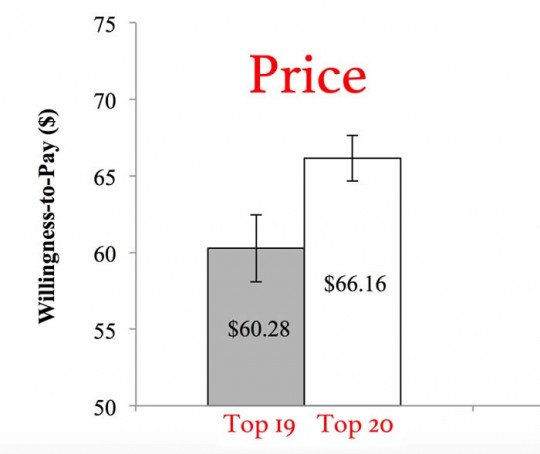
What if you rank #47?
Clearly, indisputably high rankings are desirable. But, sometimes a rank may fall in a range that is a bit iffy, like #47.
Absolute rankings are relative, of course. Being ranked #47 among US golfers would be an honor. Being #47 in a list of neuromarketing bloggers, not so much.
The scientists found that the comfort tier basics held when they looked at #47, but with a few twists.
As before, brand evaluation numbers for “Top 50” were better than for “Top 47,” which in turn beat the use of “#47.”

One surprise is that no rank claim at all outperformed both “Top 47” and “#47.” At least in the context of the experiment, these odd numbers didn’t impress the subjects. “Top 50” was better than no claim, but not by a wide margin.
“One of the Best…”
The bigger surprise, perhaps, is that the open-ended claim “One of the Best” scored the best brand evaluation of all.
But, it could be that “one of the best” is not only non-specific but somewhat misleading in this case.
If you told me a product ranked as “one of the best,” I’d suppose it was in the top five or ten. Without other information, like, “out of thousands tested,” I’d be surprised that #47 was ranked among the best. The subjects may have had a similar bias.
Other factors affect how we evaluate rankings and can diminish the effect of comfort tiers. The experimenters, for example, found that prompting subjects to estimate rank or applying time pressure reduced or eliminated the comfort tier effect. But, these conditions don’t seem to apply to typical marketing communications.
Ranking Authority
One area the researchers didn’t examine in depth is the perceived authority of the ranking. A wine ranking created by Wine Enthusiast or Robert Parker probably has higher credibility than one from Sipping Sal’s Wine Blog.
A high ranking from a high-authority source is the gold standard for brand impact.
Ranking Psychology Takeaways
The important findings you need to incorporate in your own marketing are,
- Promoting a reasonably favorable ranking will almost certainly help your brand.
- Expressing the rank using familiar tiers like Top 10, 20, or 50 will usually outperform an unusual tier like Top 13 or 43.
- Tiers ending in “0” are more common, and may perform better than the next most common ending, “5.”
- Individual ranks like #17 will usually perform worse than any kind of top tier ranking.
- A claim like “One of the Best” may outperform unimpressive rankings regardless of their format.
The usual cautions about testing apply here. Rankings are far from absolute, and multiple factors will affect how your ranking claim is perceived by potential customers.
Promoting a Top 10 or 20 ranking beats a specific rank number. #Neuromarketing Share on X(Thanks to Mathew Isaac of Seattle University, principal author of the paper, for sharing this research with me.)
